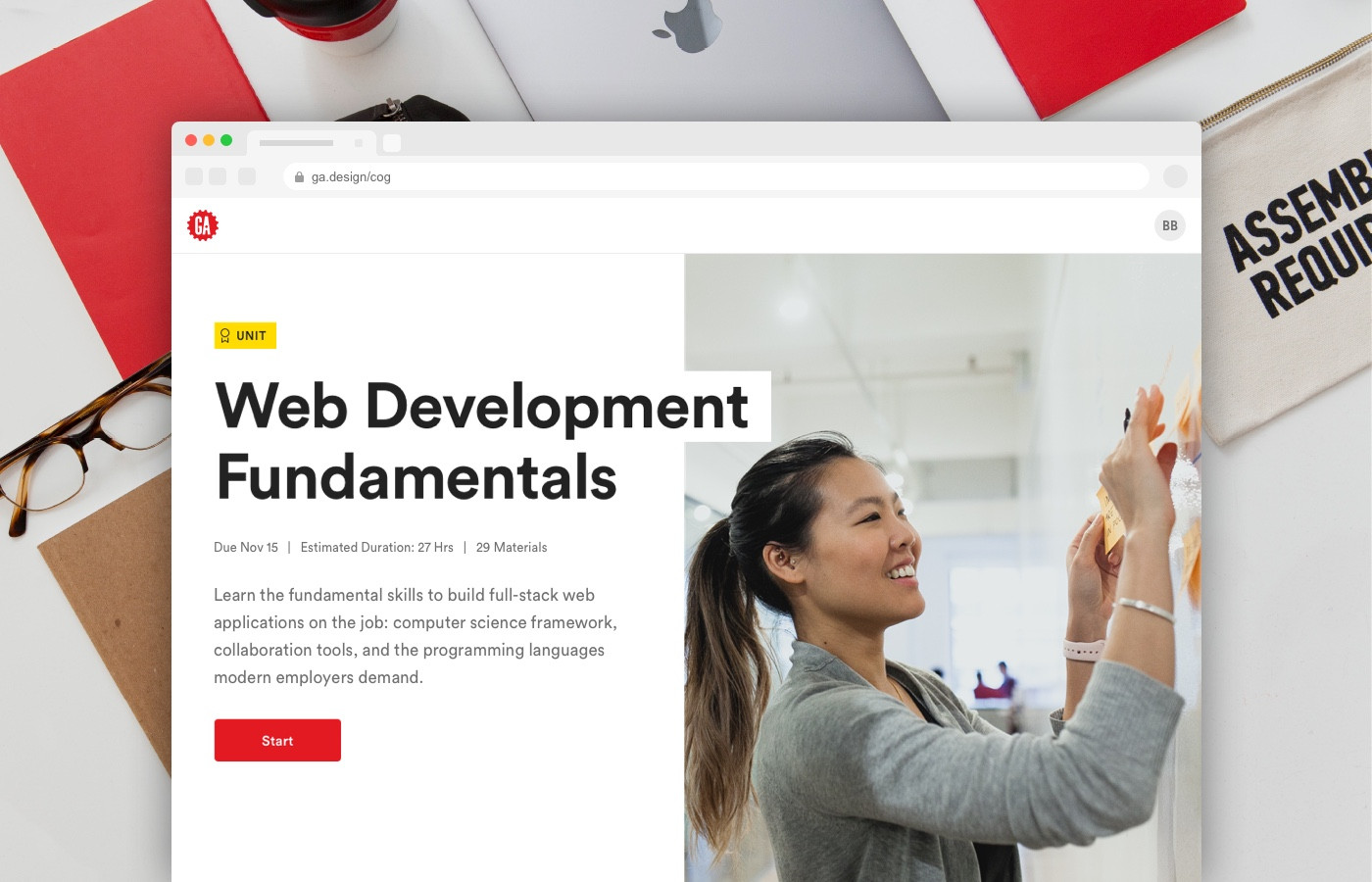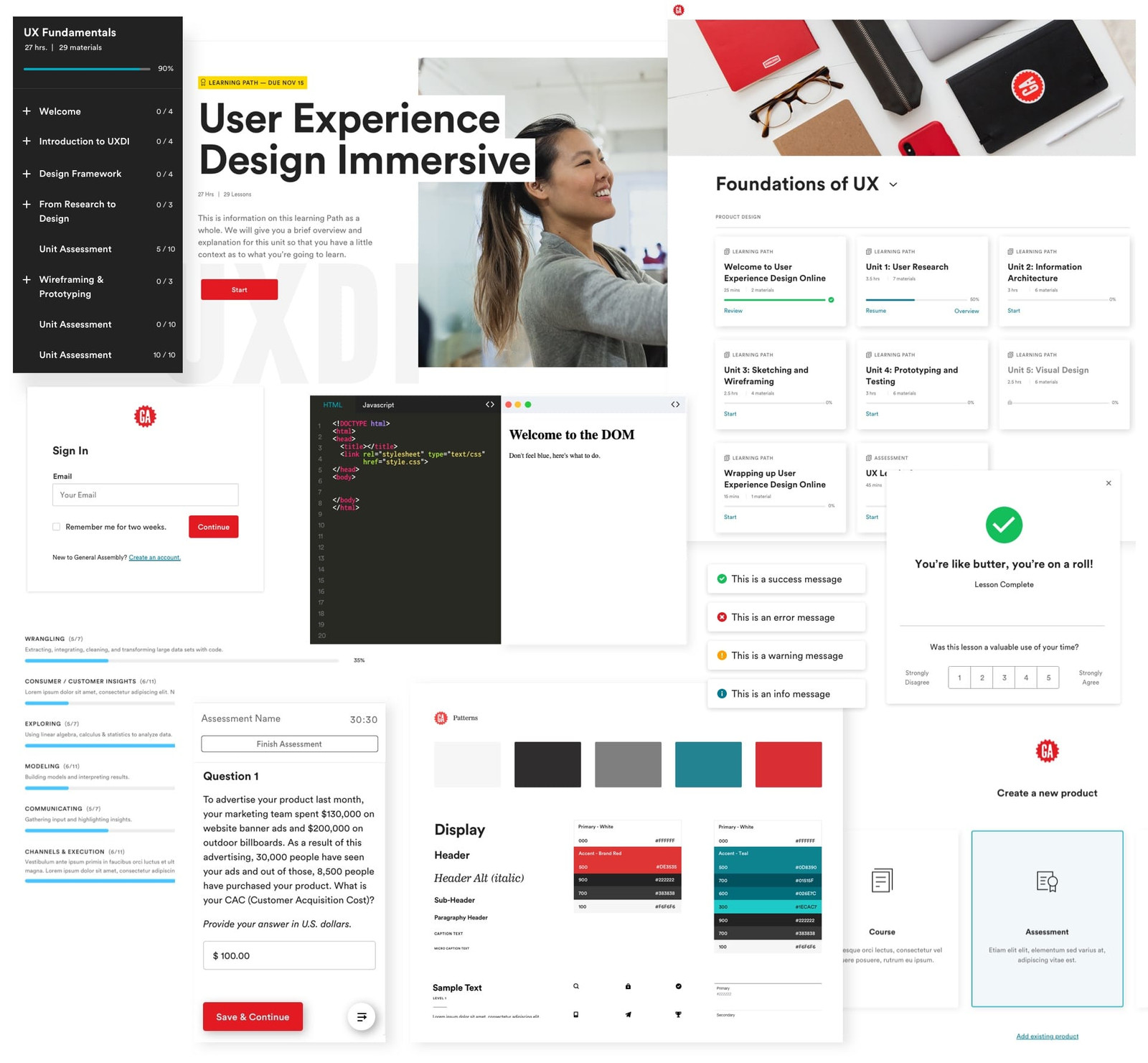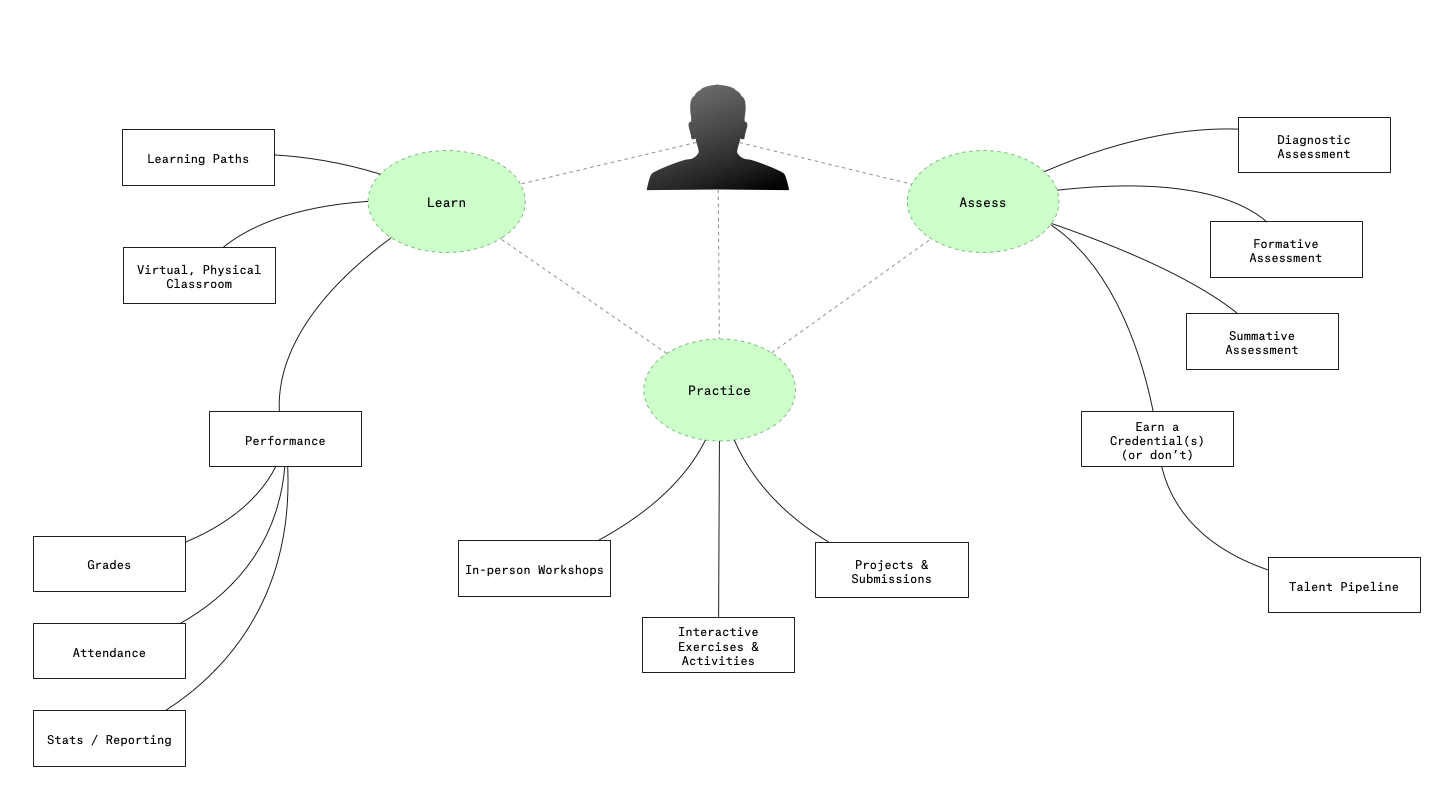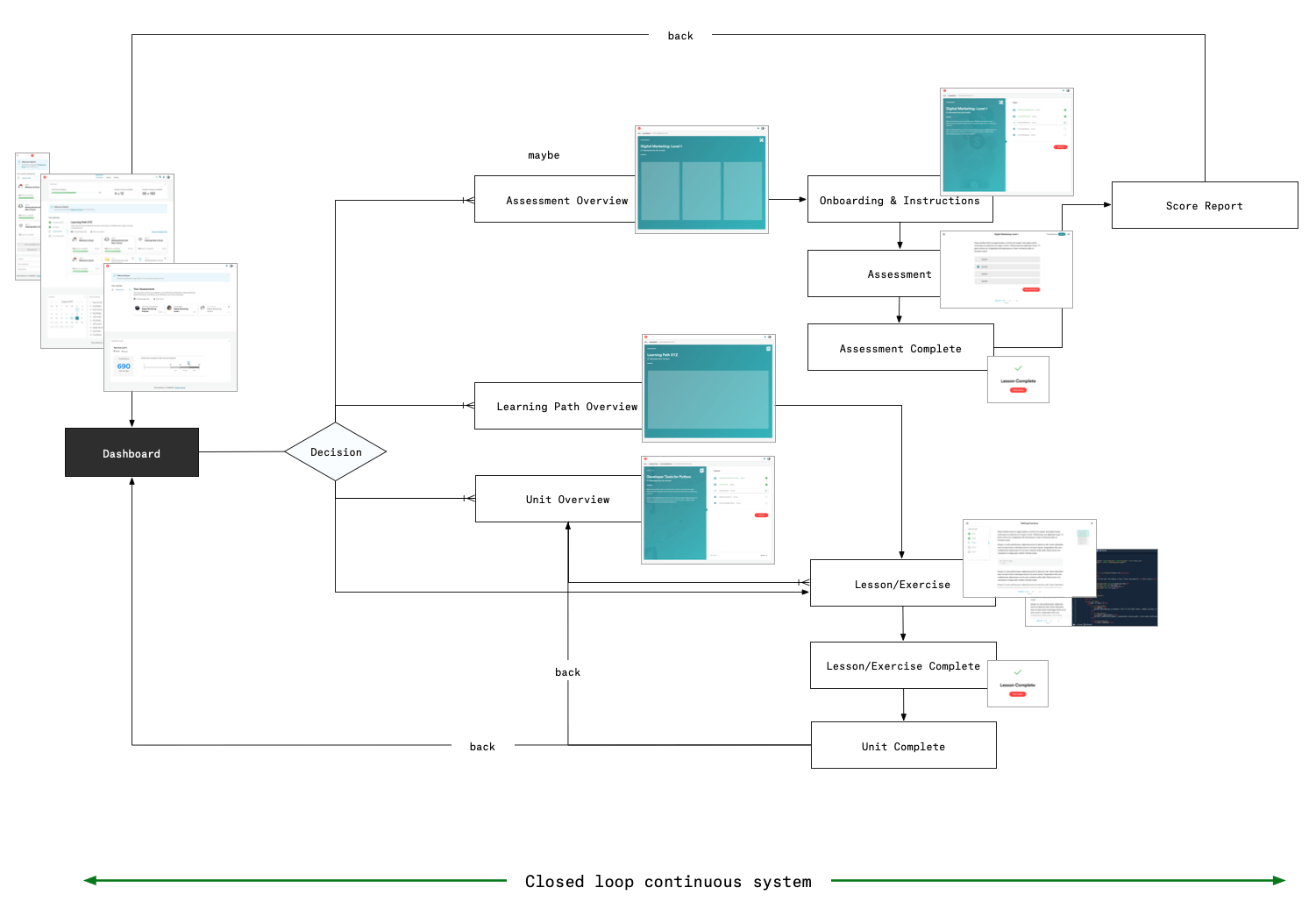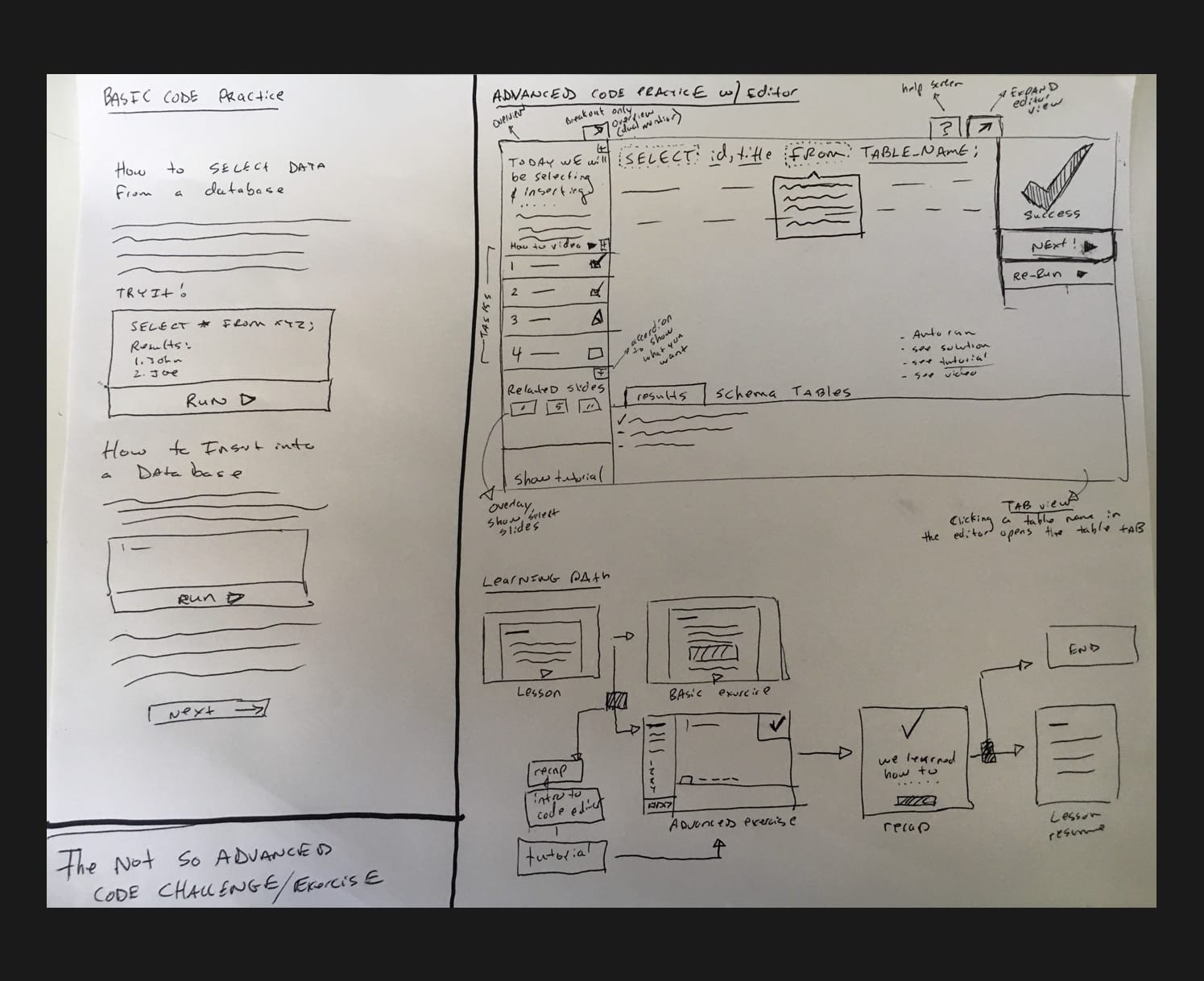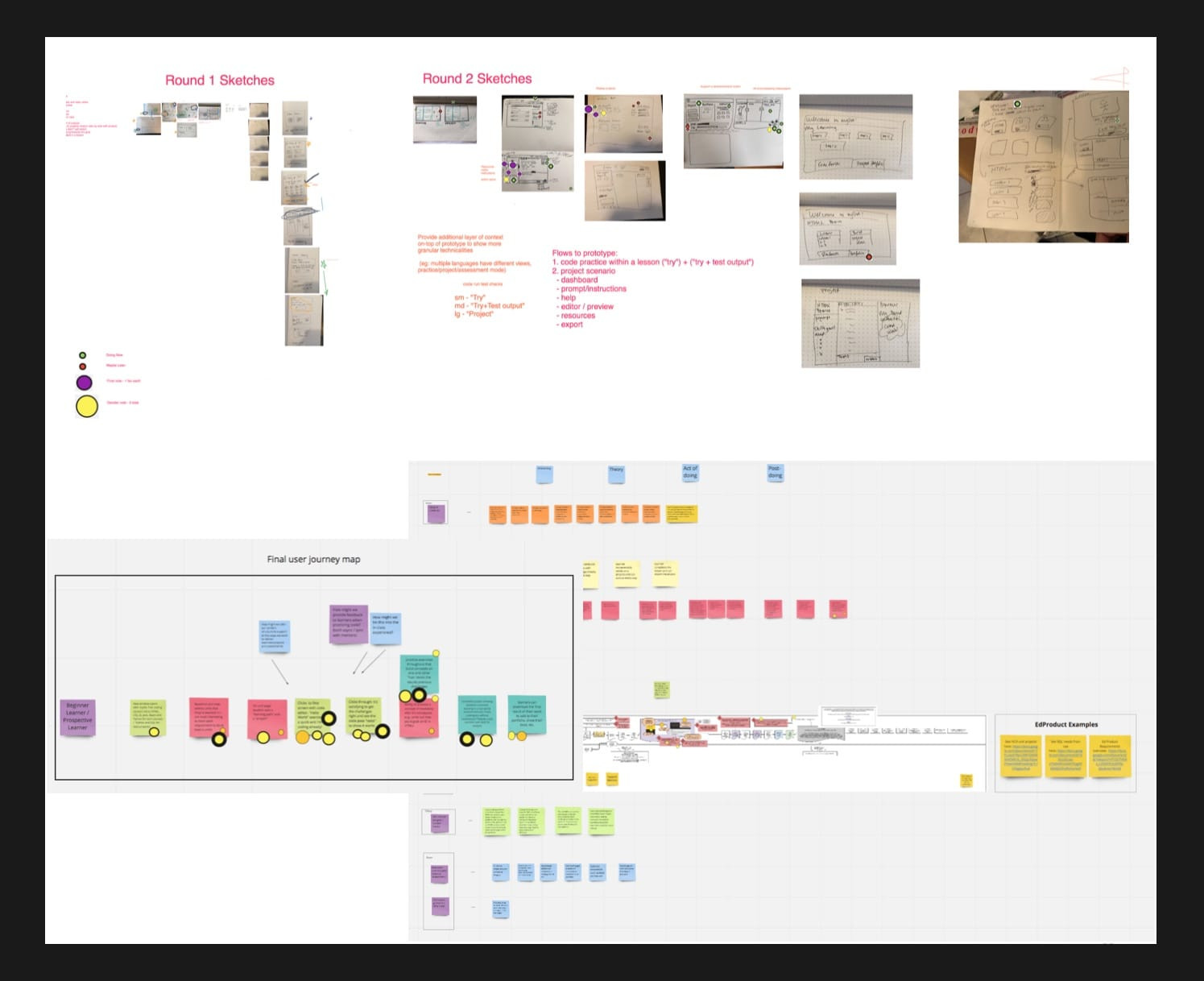General Assembly:
Learning Platform
Overview
Build a B2C/B2B Learning Management System and Content Authoring Tool from the ground up.
Role(s)
Principal Product Designer
Example LMS Unit Overview Page
Overview
As a part of GA's EdTech team I worked extensively for ~3 years on various aspects of their proprietary online learning platform, myGA.
MyGA is comprised of a backend CMS, and various front-stage systems including a multi-tenant Learning Management System(LMS) comprised of team management, progress tracking and reporting, multiple learning modules (text slides, matching and ordering quizzes, videos, etc.) and an assessment credentialing tool.
It offers a seamless experience on desktops, phones, and tablets, making it accessible (WCAG AA) for professionals anywhere/anytime.
I was responsible for staffing the original design team for this project as well as leading the team to initial launch.
Various Parts of the MyGA Platform
The Mission
- Establish a Vision
- Complete a Competitive Analysis
- Interview Customers
- Define Customer Archetypes
- Prioritize User Objectives
- Define Health Metrics
- Concept & Prototype
- Ship MVP
- Monitor & Learn
The Vision
A central gateway into your experience with GA. A tool that is contextually relevant, accounts your journey, and encourages you to succeed in your goals.
Much of the GA experience up until this point took place in the physical space (in a classroom). The MyGA platform was meant to anchor the experience. I often referred to this as the “homebase” concept.
Information Architecture
There are a lot of moving parts to consider when building a Learning Managed System from scratch. At GA, curriculum wasn't yet standardized and there was a lot of source material to wrangle into a standard data-structure. Establishing the content taxonomy was a critical juncture in the project as it laid the foundation for the rest of the experience.
Once we knew what we wanted to teach and how to organize it, the rest of the process was determining how we should go about it.
Curriculum Content Taxonomy
The Customer
MyGA serves many different customer types. These customers may originate from different sources (eg: client, academy, consumer) and may be assigned a high cardinality of assignments (learning, assessments, etc...) The context, goals, and priorities of a customer are mutable and can change over time based on which phase of their journey they are in.
A few notable things we learned through user testing and interviewing:
- The system needs to adapt to best serve customer goals at each milestone phase.
- A customer's appetite for learning is largely based on their own personal goals (eg: job-seeker vs. level-upper vs. role-shifter).
- A streamlined onboarding flow that get's a customer into learning asap leads to hiring completion rates and NPS.
- Learning to code is hard, customers sometimes need immediate mentor guidance and feedback.
- Revealing more on-demand vs. all up front is crucial as the density of some courses can exhaust cognitive capacity.
- Friendly purpose-written messaging goes a long way to humanizing a software-based platform.
- It's important to reduce the amount of software a customer engages with to promote goal oriented focus. eg: we minimized project submissions down from 10+ tools to 1.
Ultimately, customers would be using MyGA to anchor their in-person, and online experiences. They would be consuming learning material, tracking performance, monitoring a cohort, and earning credentials.
User centered design matrix
Critcal Path: Customer Journey Map
Notable Initiatives
Over the course of 3 years we worked on many initiatives, and went through a few redesigns. These were some that stood out to me in that they were highly impactful to the customer experience.
The Critical Loop
The critical loop involved customers starting their journey on the dashboard where there were options for starting a number of Units. Upon entering a unit the user would be greeted with a short overview and option to start the Unit if they haven't already. Customer's that have already started this unit would be brought directly to where they last left off. This "feature" proved to dramatically increase completion rates of Units and improve our time-to-first-lesson metric.
Prototype: Dashboard > Lesson (deep-linked)
The Sidebar
We went through hundreds of navigation design iterations. In order to bring the experience together, we tested our way into a sidebar that would give customers the ability to move back and forth between content and track progress at any point in their learning journey.
Prototype: Sidebar
Lesson Actions
We built in a mechanism early on to capture direct user feedback throughout the lesson experience. Customers we able to select an NPS score, but more importantly, free-write comments and suggestions. One of the most common suggestions was a way to download and bookmark course material. This prototype explores these "lesson actions".
Prototype: Lesson Actions
Mentor Booking
In order to enable the scaling of async courses it was necessary to surface one of our key differentiators, expert mentorship. I led a Design Sprint where we ideated and executed a testable feature that allows students to book mentor support from any lesson.
Prototype: Lesson > Mentor Booking
Many-A-Design-Sprint
We ran a modified 3-5 day Design Sprint for just about every initiative listed above. This allowed the team to rapidly define and test ideas to solve customer and business needs.
Design Sprint: Sketching
Design Sprint: Miro Board
Working together our team was able to avoid endless-debate cycles and compress weeks or months of time into 3-5 days. Instead of waiting to launch fully baked features we tested smaller bits to see what worked.
Conclusion
Thousands of employees from startups to Fortune 100s, have used General Assembly’s online learning platform to gain and apply new, industry-relevant skills. MyGA hosts the entire education journey, from assessment, learning, team management, and performance tracking.
There is so much more to talk about regarding my work on the EdTech team at GA and specifically about the platform. I have hundreds of artboards, scribbles, and recorded user-interviews that I'll definitely be revisiting in more detail in future posts.
My work staffing a design team to define and build a best-in-class learning product was invaluable, it really challenged and grew my ability to solve problems at the macro and micro level. The EdTech crew at GA was one of the best teams I've had to privilege to work on (big shout out to everyone involved!).
